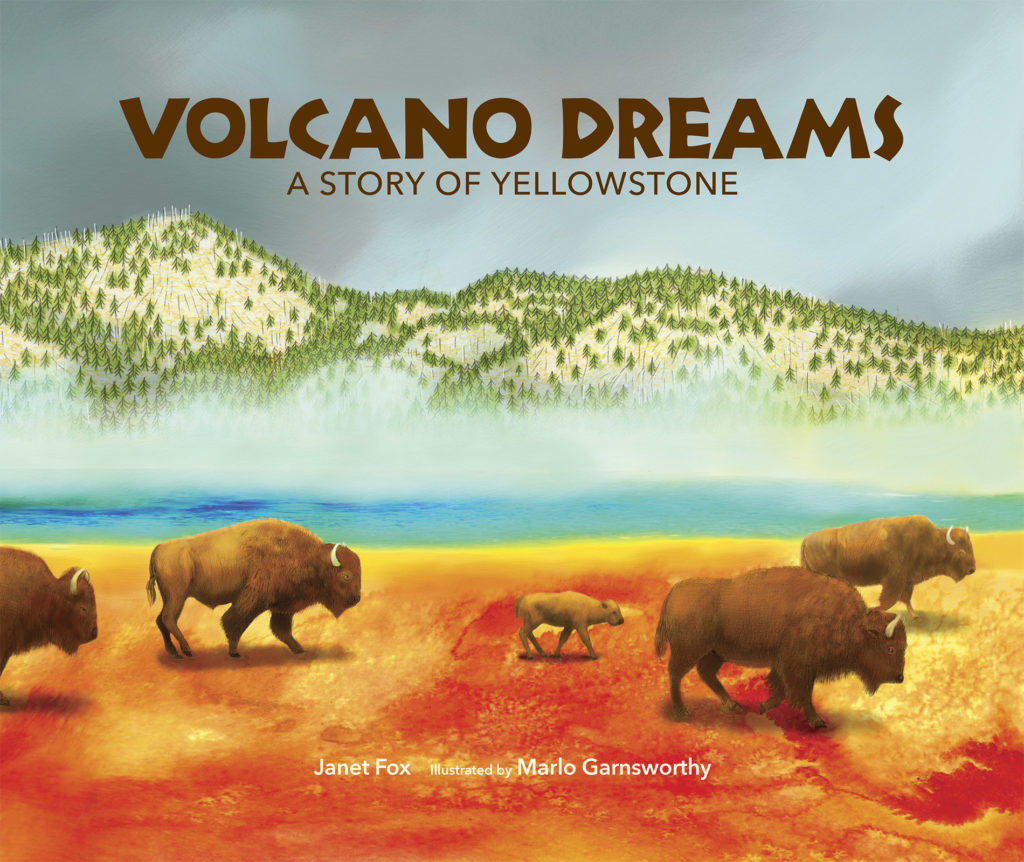While non-fiction books are increasingly being embraced as tools for teaching, books about nature are especially useful for reaching some of most children who are farthest away from books: reluctant readers and STEM fans.

That’s why we asked our client Janet Fox, author of the upcoming nature picture book VOLCANO DREAMS, to write a guest post on how teachers can create more impact in their classrooms with these books…
Before I was a published author, I was a middle-grade English teacher with a master’s degree in geology and was, for a time, a student of botany with an eye to landscape design. My peculiar twisty career path exposed me to the merits of analytical thinking and scientific inquiry, as well as the rewards of creative expression, particularly as witnessed in the natural world.
Nowhere, I think, is that combination more evocative than in a well-designed non-fiction picture book about nature.
Particularly for city-dwelling kids, whose exposure to nature is limited, non-fiction picture books provide a window into the natural world. Richard Louv, author of Last Child in the Woods: Saving Our Children From Nature-Deficit Disorder, says that exposure to nature can reduce stress and increase attention spans. Having a library that apportions some space to nature non-fiction can begin to bridge the nature deficit.
The wide variety of beautifully illustrated and accurately researched nature books available today can act as a supplement to any teacher’s classroom curriculum. Kate Messner’s OVER AND UNDER THE SNOW (illustrated by Chris Silas Neal) captures what is hidden beneath the winter snow blanket. Jason Chin’s THE GRAND CANYON follows a young girl through the canyon in imaginative fashion, including prehistoric time travel, while his illustrations are precise depictions of the geologic history exposed by the canyon walls.
 My debut picture book, VOLCANO DREAMS (Web of Life Books), takes readers on a journey through and beneath Yellowstone National Park, from the animals that roam its surface to the volcano that lies below. By giving readers a window inside the earth, they begin to understand how the rocks and thermal features they see on the surface are expressions of volcanic activity past, present, and future.
My debut picture book, VOLCANO DREAMS (Web of Life Books), takes readers on a journey through and beneath Yellowstone National Park, from the animals that roam its surface to the volcano that lies below. By giving readers a window inside the earth, they begin to understand how the rocks and thermal features they see on the surface are expressions of volcanic activity past, present, and future.
Though my students were age 12 and older, I often used non-fiction picture books in the classroom because the combination of illustration and well-researched text drew in precisely those students I needed to reach most – the reluctant readers. A selection of well-chosen picture book texts allows a child to explore her unique interest – dinosaurs, space, weather, mountain-building – and can become a gateway to more complex STEM material. And, as well-respected teacher and writer Donalyn Miller has said, “…picture books and graphic novels are formats for storytelling. They don’t dictate or limit the age or ability of who ‘should’ read them.”
It’s not difficult to find a selection of nature picture books for your classroom or library, but here are a few lists:
- NCTE has a recent resource list of non-fiction picture books broken down by category.
- I like this list of books recommended by teachers.
- And here’s a Pinterest page with numerous choices for nature lovers.
In a recent School Library Journal article, Melissa Stewart cites expert opinion suggesting that a classroom library should be divided 50-50 between fiction and non-fiction. When you make your non-fiction picture book selections, consider giving nature non-fiction a place of prominence to bring a bit of the world outside the window into your classroom.
Janet Fox is the author of award-winning fiction and non-fiction books for readers of all ages, including the middle-grade novel THE CHARMED CHILDREN OF ROOKSKILL CASTLE, which received starred reviews from Kirkus, Booklist, Publishers Weekly and Shelf Awareness. She teaches presentations on “Spies & Secrets,” exploring history; “From Castles to Kraken: World-Building in Fantasy;” “Study Skills for Middle Grade Students,” and more.
